Machine Vision-Based Method for Estimating Lateral Slope of Structured Roads
Abstract
1. Introduction
2. Principle of Machine Vision-Based Road Lateral-Slope Estimation Algorithm
2.1. Straight Road Cross Slope Solution

2.2. Curved Road Cross Slope Solution
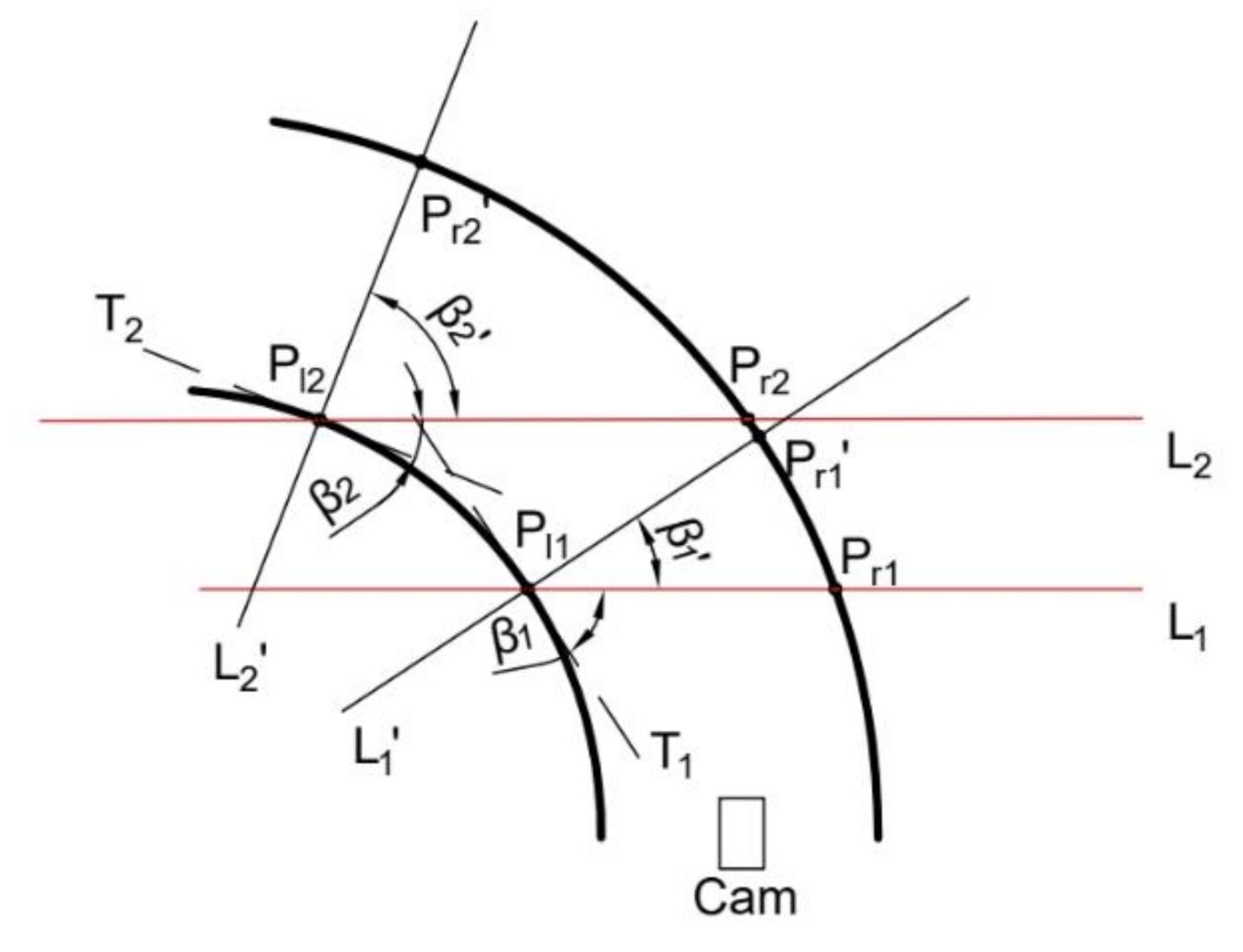
3. Estimation of the Position of the Vehicle Relative to the Lane Line and the Slope of the Lane Line Tangent
3.1. Lane Line Detection Algorithm
3.2. Estimation of Vehicle Position Relative to the Lane Line
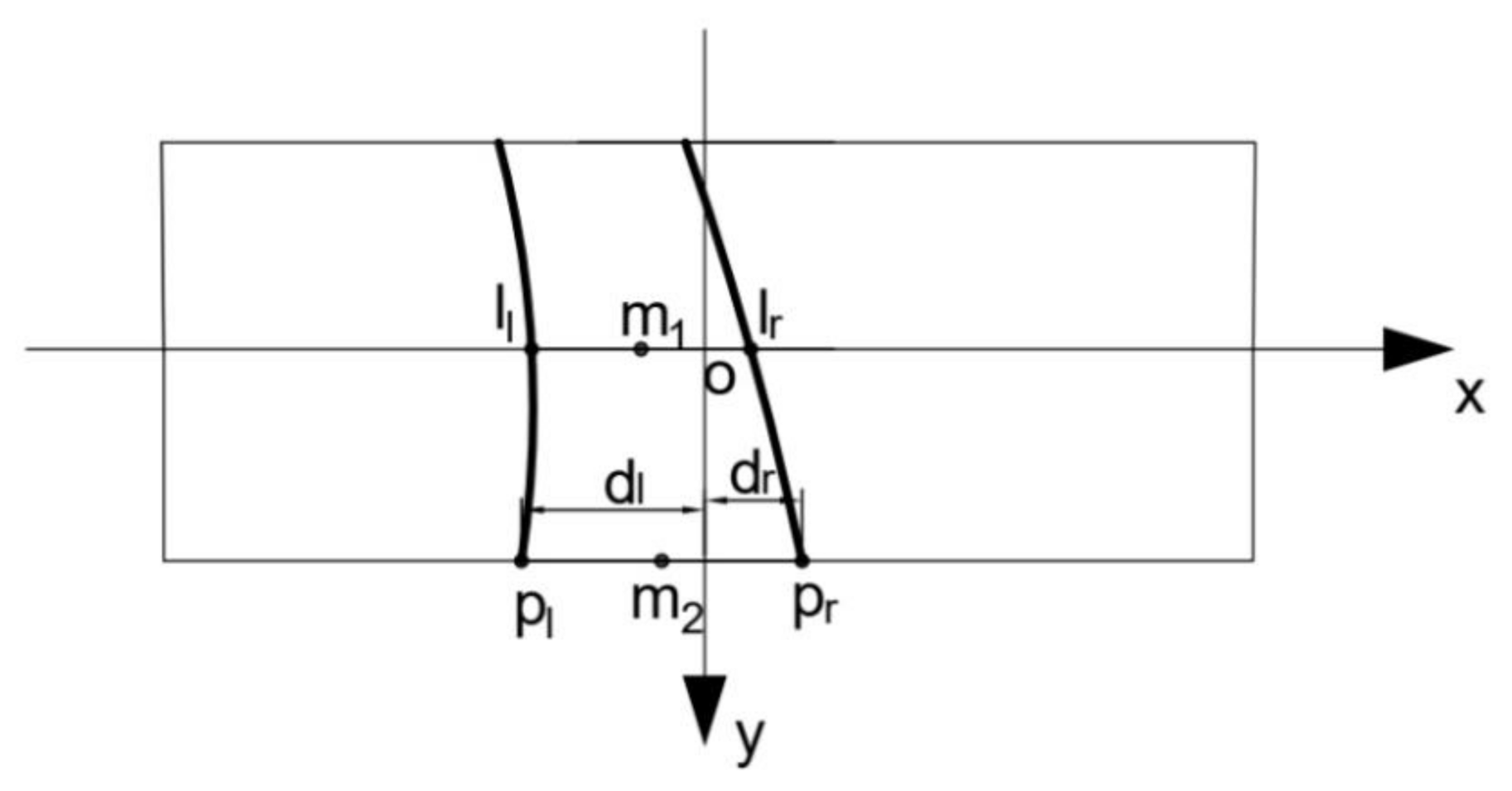
3.3. Estimation of Lane Line Tangent Slope
4. Simulation Experiment Verification and Analysis
4.1. and Estimation Validation Experiments
4.2. Verification Experiments of Lane Line Tangent Slope Estimation
4.3. Road Lateral Slope Estimation Validation Experiment
4.4. Slope Estimation Error Analysis
5. Conclusions
Author Contributions
Funding
Institutional Review Board Statement
Informed Consent Statement
Data Availability Statement
Acknowledgments
Conflicts of Interest
References
- Li, F. Research on Cause Mechanism of Major Road Traffic Accidents and Its Risk Behaviors; Changan University: Xi’an, China, 2014. [Google Scholar]
- Mclaughlin, S.B.; Hankey, J.M.; Klauer, S.G.; Dingus, T.A. Contributing Factors to Run-off-Road Accidents and Near-Accidents; National Highway Traffic Safety Administration (NHTSA): Washington, DC, USA, 2009.
- Hussein, M.; Sayed, T.; Ismail, K.; Van Espen, A. Calibrating road design guides using risk-based reliability analysis. J. Transp. Eng. 2014, 140, 36. [Google Scholar] [CrossRef]
- Liu, C.; Subramanian, R. Factors Related to Fatal Single-Vehicle Run-off-Road Accidents; National Center for Statistics and Analysis: Washington, DC, USA, 2009.
- Cheng, G.; Cheng, R.; Xu, L. Probabilistic prediction of roadside accidents in outer lane of small radius curve sections of highways. J. Harbin Inst. Technol. 2021, 53, 178–185. [Google Scholar]
- Qu, Q.; Li, X.; Wu, M.-X.; Pan, B.-H.; Wang, G.-S. Comparative Study on Expressway Super-elevation Transition Modes Based on Driving Stability. J. Highw. Transp. Res. Dev. 2021, 38, 15–24. [Google Scholar]
- Japan Road Association. Interpretation and Application of Japanese Highway Technical Standards; China Communications Press: Beijing, China, 1980. [Google Scholar]
- AASHTO. A Policy on Geometric Design of Highways and Streets; AASHTO: Washington, DC, USA, 2011. [Google Scholar]
- Jeong, J. A Hydrodynamic Diffusion Wave Model for Stormwater Runoff on Highway Surfaces at Superelevation Transitions; University of Texas at Austin: Austin, TX, USA, 2008. [Google Scholar]
- Jeong, J.; Charbeneau, R.J. Diffusion Wave Model for Simulating storm-water Runoff on Highway Pavement Surfaces at Superelevation Transition. J. Hydraul. Eng. 2010, 136, 770–778. [Google Scholar] [CrossRef]
- Zhang, Z.; Cheng, J. Safety Margin-based Analysis on Road Superelevation Rate Selection. In Proceedings of the 15th COTA International Conference of Transportation Professionals, Beijing, China, 25–27 July 2015. [Google Scholar]
- Fitzpatrick, K.; Kahl, K. A Historical and Literature Review of Horizontal Curve Design; Texas Department of Transportation: Austin, TX, USA, 1992.
- Arslan, A.; Tari, E.; Ziatdinov, R.; Nabiyev, R.I. Transition Curve Modling with Kinematical Properties: Research on Log-Aesthetic Curves. Comput.-Aided Des. Appl. 2014, 11, 509–517. [Google Scholar] [CrossRef][Green Version]
- Xu, J. Highway Survey and Design, 4th ed.; China Communications Press: Beijing, China, 2016. [Google Scholar]
- Lin, N.; Shi, S.M.; Ma, L.; Kui, H.L. Road grade estimation with grade change rate information. J. Jilin Univ. 2016, 46, 1845–1850. [Google Scholar]
- Shen, Y.; Chen, L.; Yang, X.; Liu, Y.; Liu, C. A Research on the Enhancement of Vehicle Lateral Stability by Applying Inerter to Suspension. Automot. Eng. 2018, 40, 693–698. [Google Scholar]
- Huang, C.; Chen, L.; Yuan, C.; Jiang, H.; Chen, Y. Chaos study of vehicle lateral dynamics based on perturbation parameter. J. Southeast Univ. 2012, 42, 1111–1116. [Google Scholar]
- Sun, C.; Wu, C.Z.; Chu, D.F. Safety Evaluation of Driving on Curves Based on Analysis of Vehicle Lateral Stability. J. Transp. Inf. Saf. 2014, 32, 95–100. [Google Scholar]
- Chu, D.; Cui, J.; Deng, Z.; Tian, F.; Wu, C. Research on Vehicular Rollover Warning Based on Improved TTR Algorithm. China Mech. Eng. 2016, 27, 1557–1561. [Google Scholar]
- Zong, C.F.; Hu, D.; Yang, X.; Pan, Z.; Xu, Y. Vehicle driving state estimation based on extended Kalman filter. J. Jilin Univ. 2009, 39, 7–11. [Google Scholar]
- Hsu, L.Y.; Chen, T.L. Vehicle full-state estimation and prediction system using state observers. IEEE Trans. Veh. Technol. 2009, 58, 2651–2662. [Google Scholar]
- Antonov, S.; Fehn, A.; Kugi, A. Unscented Kalman filter for vehicle state estimation. Veh. Syst. Dyn. 2011, 49, 1497–1520. [Google Scholar] [CrossRef]
- Zhou, C. Road Slope Angle Measuring Device. Patent CN201320054259.5, 3 July 2013. [Google Scholar]
- You, R. The Utility Model Relates to a Road Slope Measuring Device. Patent CN201721405579.5, 11 May 2018. [Google Scholar]
- Menhour, L.; Lechner, D.; Charara, A. Design and experimental validation of linear and nonlinear vehicle steering control strategies. Veh. Syst. Dyn. 2012, 50, 903–938. [Google Scholar] [CrossRef]
- Tseng, H.E. Dynamic estimation of road bank angle. Veh. Syst. Dyn. 2001, 36, 307–328. [Google Scholar] [CrossRef]
- Tseng, H.E.; Ashrafi, B.; Madau, D.; Allen Brown, T.; Recker, D. The development of vehicle stability control at ford. IEEE ASME Trans. Mechatron. 1999, 4, 223–234. [Google Scholar] [CrossRef]
- Guan, X.; Jin, H.; Duan, C.; Lu, P.P. Estimation of lateral slope of vehicle driving road. J. Jilin Univ. 2019, 49, 1802–1809. [Google Scholar]
- Jeong, H.B.; Ahn, C.K.; You, S.H.; Sohn, K.M. Finite-Memory Estimation for Vehicle Roll and Road Bank Angles. IEEE Trans. Ind. Electron. 2019, 66, 5423–5432. [Google Scholar] [CrossRef]
- Hyun, M.; Cho, W. Estimation of Road Bank Angle and Vehicle Side Slip Angle Using Bayesian Tracking and Kalman Filter Approach. Int. J. Automot. Technol. 2018, 19, 993–1000. [Google Scholar] [CrossRef]
- Ustunel, E.; Masazade, E. Vision-based road slope estimation methods using road lines or local features from instant images. IET Intell. Transp. Syst. 2019, 13, 1590–1602. [Google Scholar] [CrossRef]
- Li, R. Theory and Application of Binocular Stereo Vision; Science Press: Beijing, China, 2020. [Google Scholar]
- Pan, X.; Shi, J.; Luo, P.; Wang, X.; Tang, X. Spatial as Deep: Spatial CNN for Traffic Scene Understanding. In Proceedings of the AAAI 2018, New Orleans, LA, USA, 2–7 February 2018. [Google Scholar]
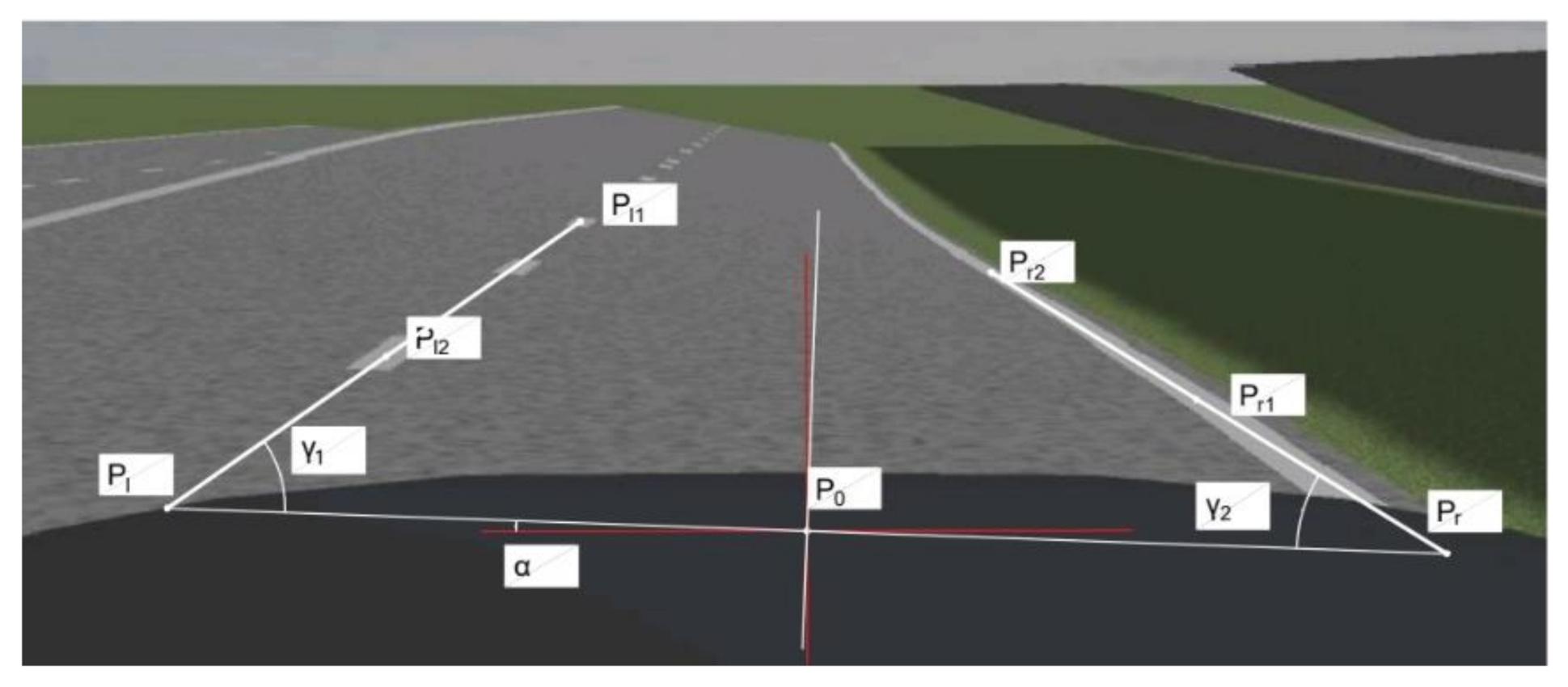


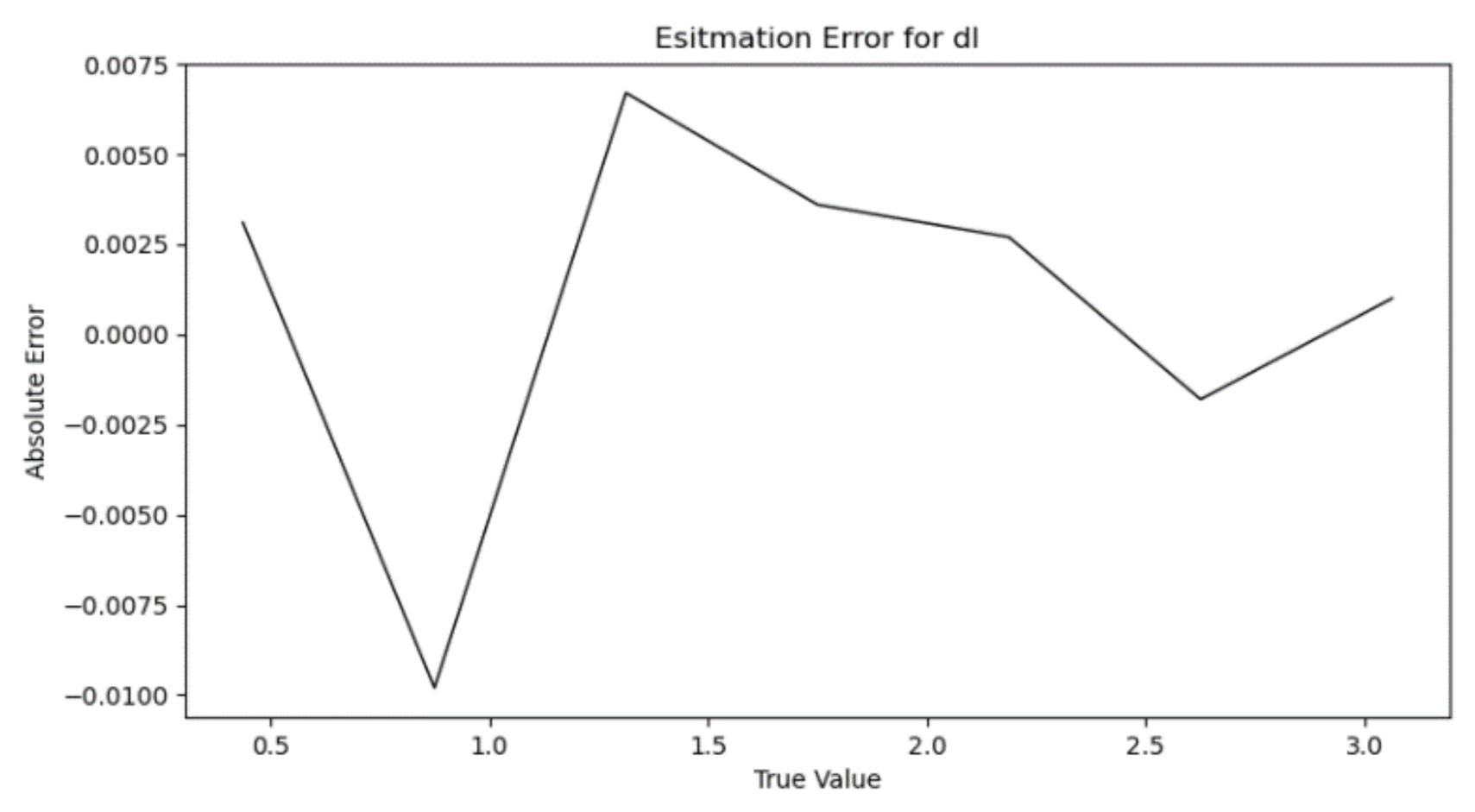



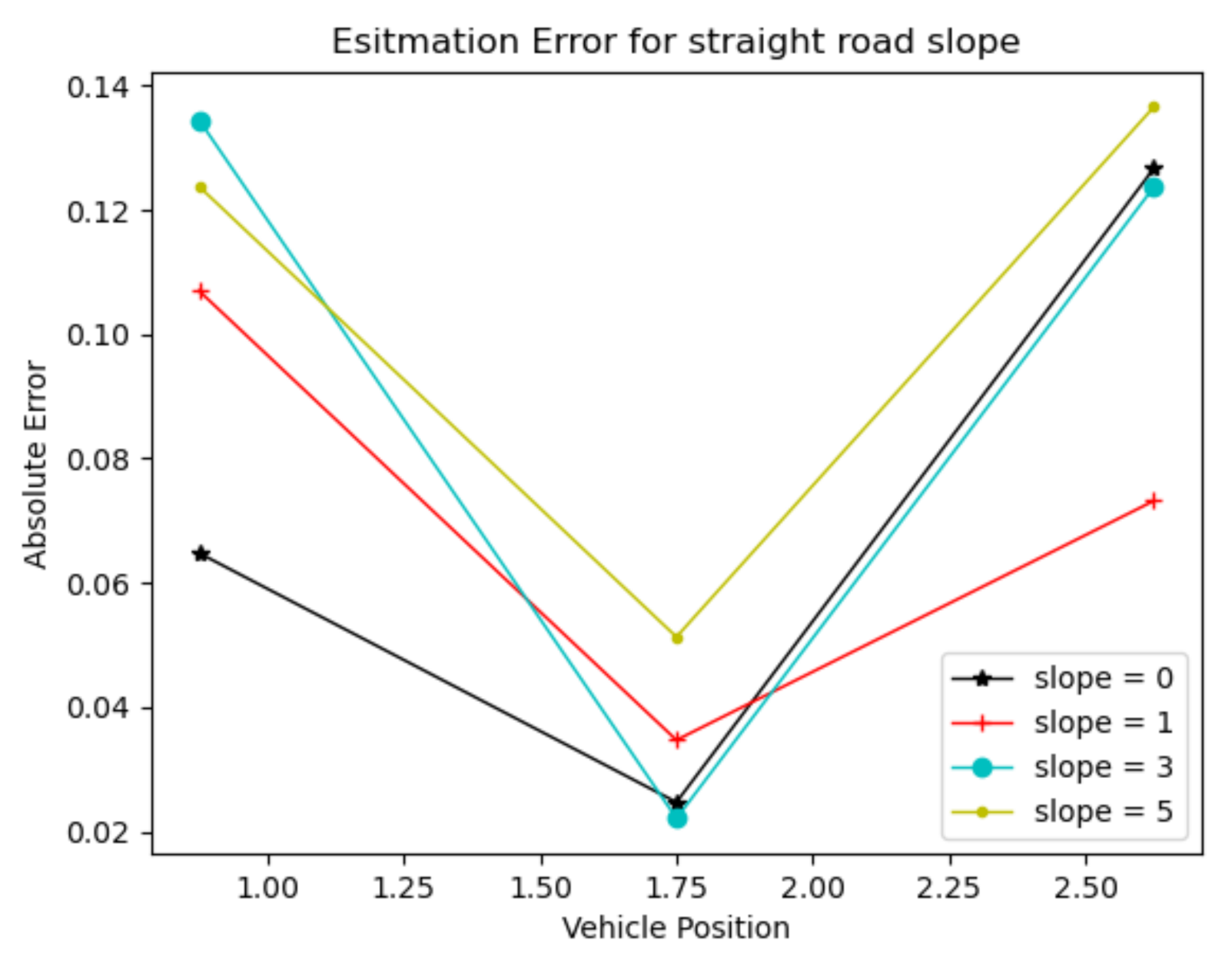
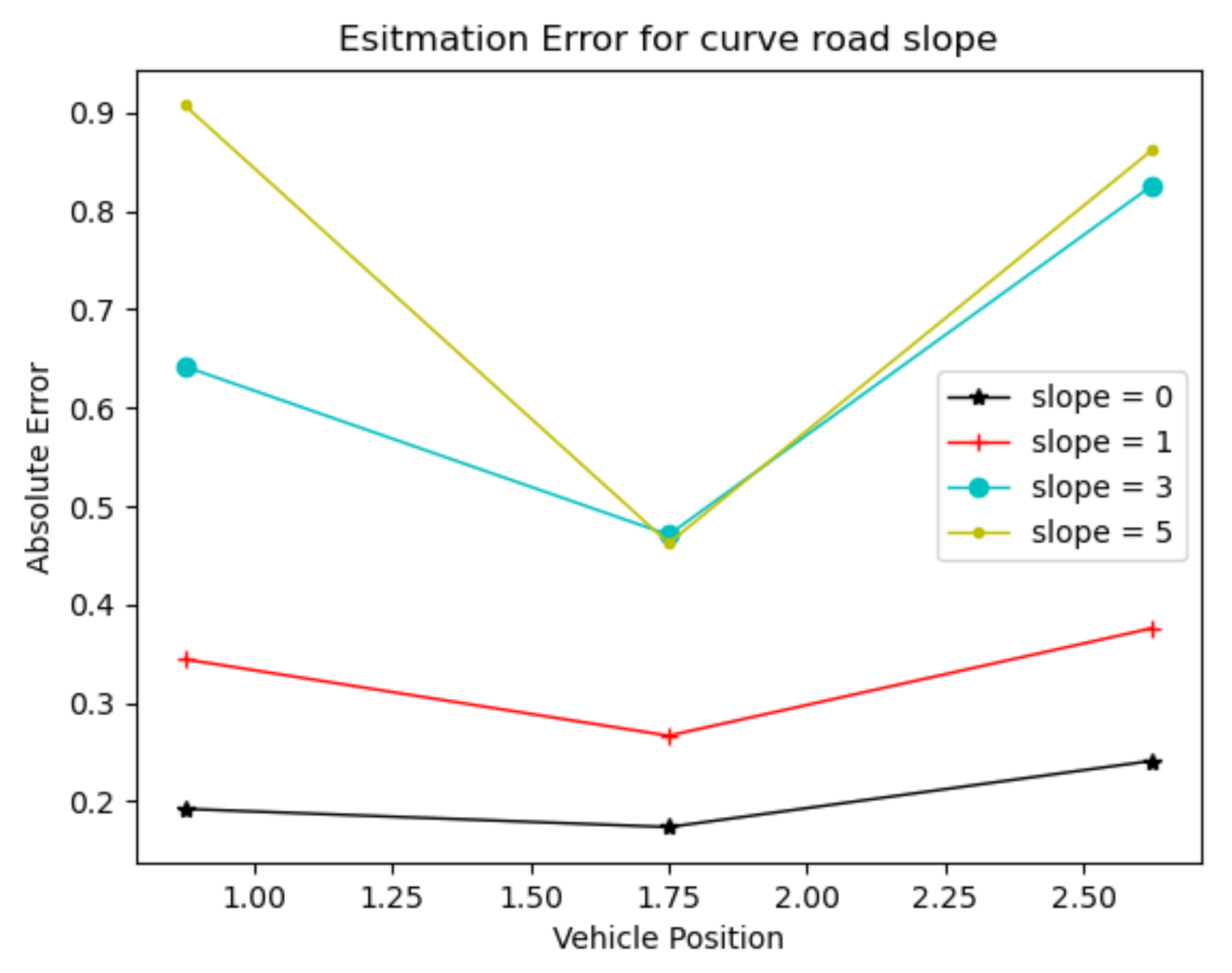
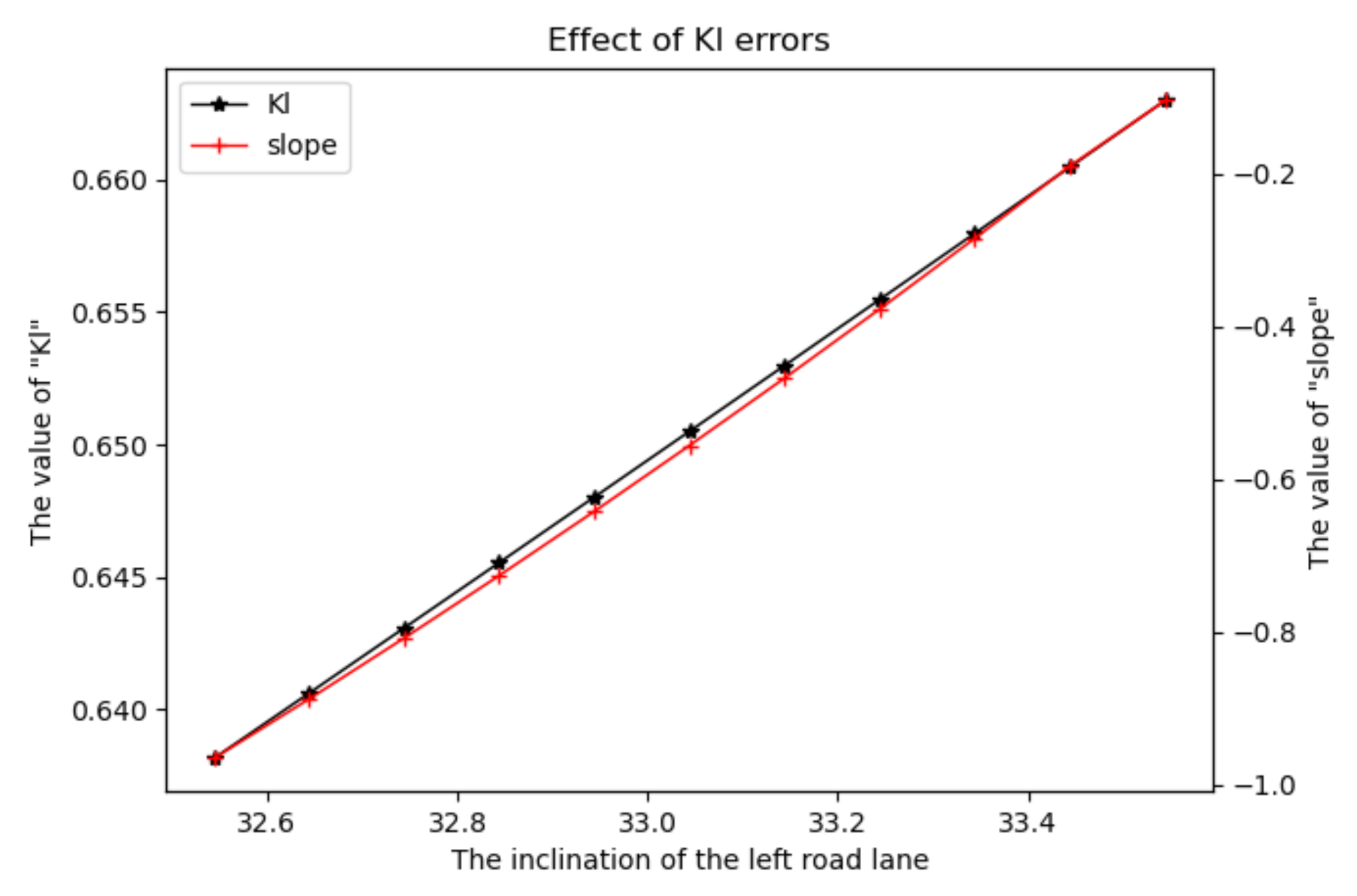
| 0.4375 | 0.8750 | 1.3125 | 1.7500 | 2.1875 | 2.6250 | 3.0625 | |
|---|---|---|---|---|---|---|---|
| Estimated value | 0.5248 | 0.8919 | 1.3212 | 1.7500 | 2.1867 | 2.6128 | 3.0225 |
| Absolute error value | 0.0873 | 0.0169 | 0.0087 | 0.0000 | −0.0008 | −0.0122 | −0.0400 |
Publisher’s Note: MDPI stays neutral with regard to jurisdictional claims in published maps and institutional affiliations. |
© 2022 by the authors. Licensee MDPI, Basel, Switzerland. This article is an open access article distributed under the terms and conditions of the Creative Commons Attribution (CC BY) license (https://creativecommons.org/licenses/by/4.0/).
Share and Cite
Yan, Y.; Li, H. Machine Vision-Based Method for Estimating Lateral Slope of Structured Roads. Sensors 2022, 22, 1867. https://doi.org/10.3390/s22051867
Yan Y, Li H. Machine Vision-Based Method for Estimating Lateral Slope of Structured Roads. Sensors. 2022; 22(5):1867. https://doi.org/10.3390/s22051867
Chicago/Turabian StyleYan, Yunbing, and Haiwei Li. 2022. "Machine Vision-Based Method for Estimating Lateral Slope of Structured Roads" Sensors 22, no. 5: 1867. https://doi.org/10.3390/s22051867
APA StyleYan, Y., & Li, H. (2022). Machine Vision-Based Method for Estimating Lateral Slope of Structured Roads. Sensors, 22(5), 1867. https://doi.org/10.3390/s22051867






